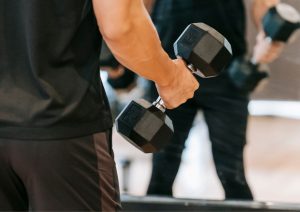It’s probably no surprise to hear that men account for the majority of workplace injuries. Those more physically-demanding jobs that are dominated by the male sex often mean that the body takes a toll! Heavy lifts, awkward positions, repetitive movements and long work hours are a recipe for injury – and yet these are recurring themes through many trades and labouring roles.
The statistics from Work Safe Australia over 2019-2020 showed that labourers made up a whopping 24% of workers compensation claims! Technicians and trade workers made up 19%, along with community and personal service workers (also 19%), followed by machinery operators and drivers at 14%. There were 44,982 claims made by females, compared to 75,240 claims made by males (1).
It’s for this reason that we see a lot of injured males in our line of work. Simply put, the body is often not prepared to deal with the loads being placed on them, day in and day out at work! In an ideal world, everyone working within a heavy-duty role would get the opportunity for professional manual handling training and a 12-week strength and conditioning program. Idealist thinking perhaps, but when you see the toll that workplace injuries can take on someone’s life, you certainly think twice.
Jason’s Workplace Injury
Tessa Thurston, our Exercise Physiologist based in Adelaide, saw this for herself when she met Jason*. Jason’s injury occurred during a day at work in the mines – a heavy lift resulting in 2 herniated discs in his lower back. Long work weeks were an understatement – in his role, Jason was required to work in the mines for 7 days straight, 12 hours per day, equalling a work week of 84 hours. His tasks were intense – lifting weights of 30-40kg to chest height, lifting up to 20kg over his shoulders, and being in sustained, awkward positions (such as bending over or completing tasks over shoulder height).
Jason managed to return to work on ‘light duties’ several weeks after the injury, but never fully recovered. Over 3 years later, the aching pain in his back got to the point where he had to stop work entirely. Jason was 36 years old – a young man with a young family to support.
The chronic pain experienced by Jason meant that, understandably, there was a lack of confidence in movement and fear of heavy lifting. He avoided doing anything that he thought may aggravate his pain. This filtered through into his home life too; he struggled with tasks such as vacuuming, mowing the lawns, and caring for his two young girls. As is often the case, his mental health had taken a decline. Sleep was disrupted, and some nights, he would lay in bed until 1 am before he was able to fall asleep.
Jason was a proactive man who had already started exercising independently when he met Tessa, completing 2 reformer pilates sessions and 1 swim per week. But Tessa knew that getting him back to work would involve facing those fears around heavy lifting. She got him set up in the gym.

Tessa’s program focused on building strength and endurance of the back muscles, as well as taking a more functional movement approach – focusing on those specific movements that he would need back in the workplace. As much as she was building his physical capacity for lifting weights, she was also building his confidence in his capacity for lifting weights. This required support, gentle guidance, and education about his pain.
… And Beyond
Jason was diligent with his program, completing 2-3 sessions independently each week, in addition to his supervised sessions with Tessa. While his strength and confidence in movement improved significantly over the course of the program, perhaps even more important was the improvement in his sleep and mental health!
Jason reported that, despite the occasional ‘twinge’ in his back, he was confident in the strategies that he had learnt for managing these, and they no longer limited him from his everyday activities. This ability to manage the flare-ups as they came, with stretching and mobility exercises, helped Jason to develop resilience and durability despite his pain.
By the end of his exercise physiology program, Jason had received clearance from his GP to commence a graduated return to work. Based on his performance during his supervised sessions, Tessa was confident in his ability to complete his pre-disability role. Jason’s confidence in himself had improved from a rating of 4/10 to 7/10. He was also now confident in his ability to lift and carry his daughter!
While the stats aren’t looking as good for tradies and labourers as we would like them to… You can rest assured that we’ve got your back (pun intended) for helping to recover from workplace injuries!
*Name changed for privacy
References:
- https://www.safeworkaustralia.gov.au/sites/default/files/2021-10/Key%20work%20health%20and%20safety%20statistics%20Australia%202021.pdf
Author: Yolanda van Vugt
Editor: Tessa Nielsen
Clinical Exercise Physiologist and Content Creator at Specialised Health
Let’s connect, find us:
Have you got a claimant that would benefit from E.P. support? Refer to the team!
#exercisephysiology #exerciserehab #rehabilitation #lifeinsurance #incomeprotection #ctp #workcover #mobile #telehealth #telehealthprogram #mobileexercisephysiology #returntowork #fatigue #mentalhealth #cancer #musculoskeletal #pain #physio #physiotherapy #Sydney #Brisbane #Melbourne #Adelaide #Auckland #Waikato #BayofPlenty #Wellington #Otago #Christchurch
